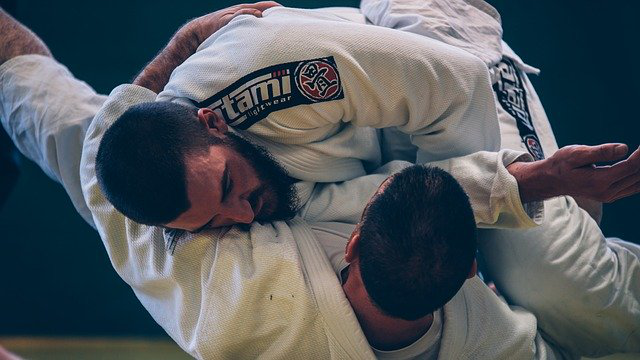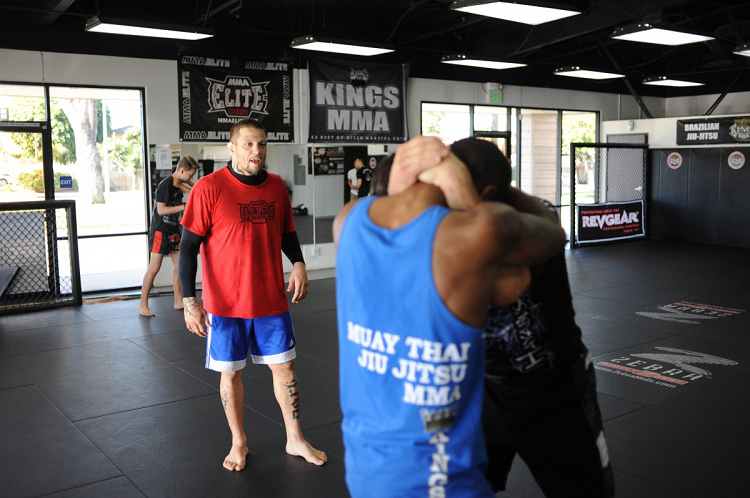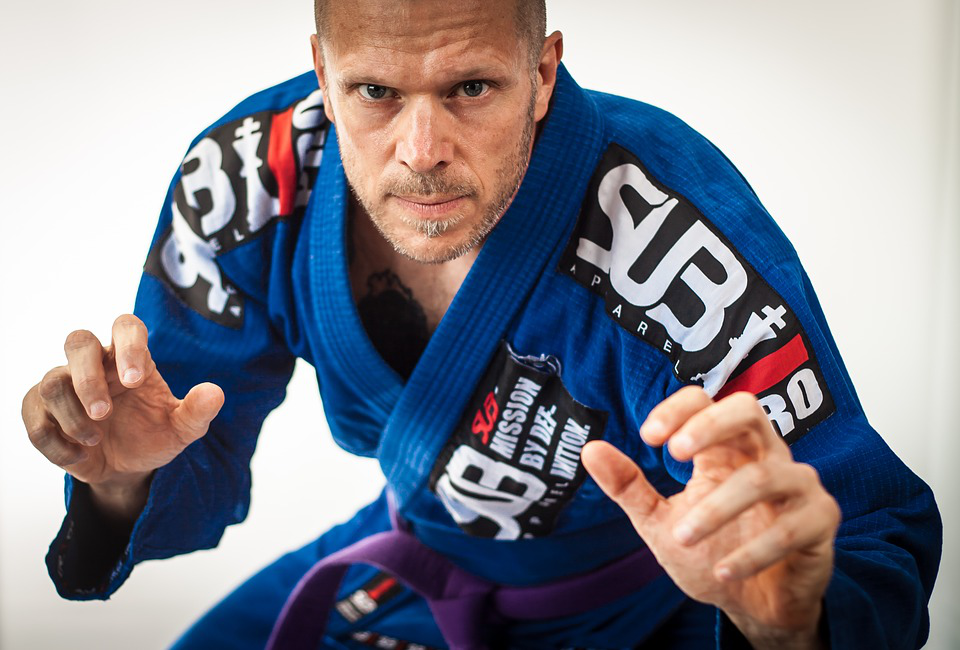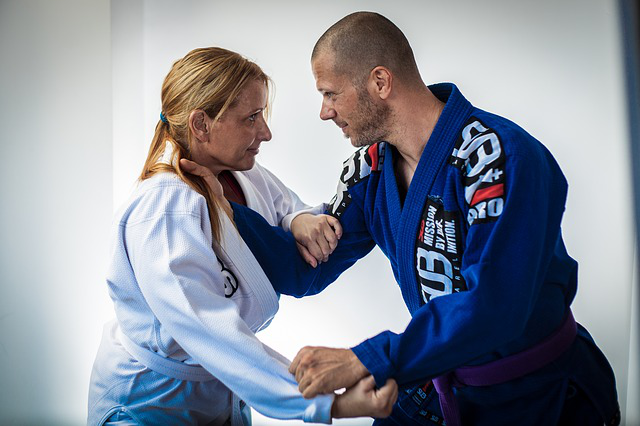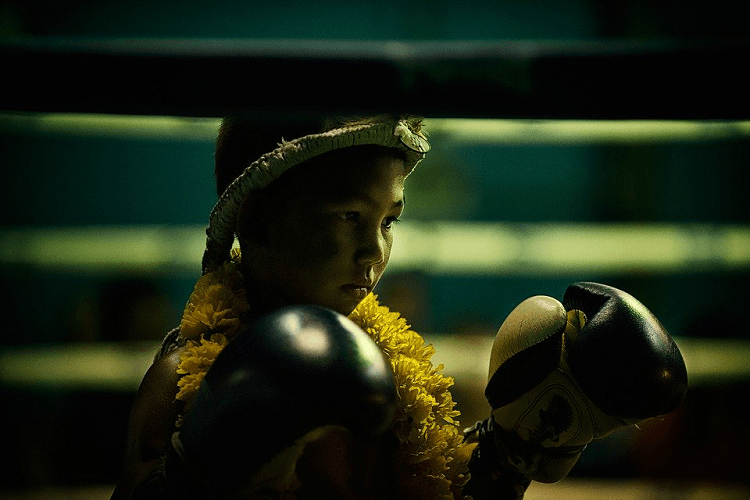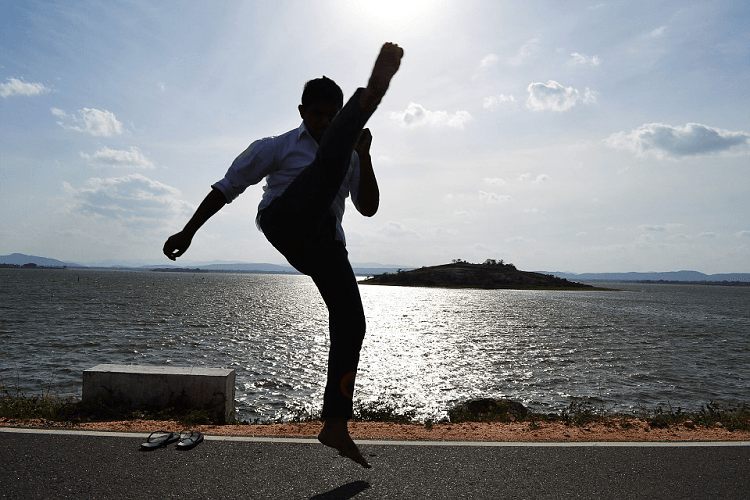Martial Arts and Self-Defense Tactical Volume Episode 2 – Awareness and Target Minimization
In our last blog, “The Intangibles of Combat”, we examined the intangible tools that a person (any martial artist) must acquire to consider his/her self defense training complete. We explored the key “Intangible” categories, what they mean, and how a greater understanding of them can benefit your overall approach to self-defense applications.
“Awareness and Target Minimization” is the second in a series of blogs on the “Intangibles of Combat” that examines the importance of awareness, and minimizing your “Target Profile” as an approach to preventing physical violence from occurring. Future blogs will build upon these principles to examine diffusion/de-escalation strategies, and the warning signs that an attack/assault may be eminent (i.e., Pre-contact Cues).
Overview
Learning to defend yourself is valuable, but being taught to avoid violence altogether is worth much more! Avoiding a violent encounter is the ultimate one-punch knockout – you are always the victor with the trophy in hand if you leave a potentially violent scenario unscathed. By acting to prevent violence from occurring you have effectively defended yourself, and the potential assailant loses the ability to attack. You take home the prize by getting home safely to your family, but the assailant may feel bewildered, taking home nothing but misery and disappointment due to the fact that the assailant was not able to effectively assault you.
As mentioned in our previous blog, we have categorized violence into three broad categories consisting of (i) Social Violence, (ii) Criminal/Predatory Violence, and (iii) Random Violence. Social Violence categorizes violent encounters that arise through our social interactions with others, and this form of violence is generally predicated on ego and desire for social ranking, rather than criminal intent. Examples include bar fights, road rage, and general disagreements amongst hot-headed individuals that escalate to violent encounters. In contrast, Criminal Violence is predatory in nature, and involves pure criminal intent from the onset (mugging, rapes, murders, and similar violent encounters)
In addressing the Intangibles of Combat, let us turn the focus to the importance of maintaining Awareness of your surroundings, as well as highlighting some simple ways that you can reduce your profile as an appealing target for violent offenders. These skills can serve in a variety of settings, but much of this will be most applicable to Targeted or Predatory violence, where the assailant (or Predator) is prowling the streets for a viable Target (you).
General Awareness
Awareness is the first and most important aspect of addressing violence. Awareness of Self, Awareness of Environment, and Awareness of Others will allow you to make better decisions in times of crises - Awareness is your frontline of self-defense. The following are some important rules to consider.
First Assess Yourself: Awareness of self (physical, socio-emotional, and cognitive abilities) and of your surroundings (environment) is the first important aspect in managing your risk profile. So take some time to first assess your physical limitations and your mental capabilities. For example, are you injured, infirm, drunk or otherwise physically or mentally compromised? Each of these considerations will impact your ability to react to danger, so understanding your limitations will help you to tailor your response to any situation.
For example, consider how are you dressed when you leave your home. Are you in blue jeans, short pants, slacks or a dress? Are you wearing comfortable running shoes, leather dress shoes, or heels? If you are vision impaired, are you wearing your glasses or contact lenses? These are important considerations in understanding your ability to flee danger or otherwise defend yourself. Similarly, if your are injured or disabled (or impaired or intoxicated), this may also limit your options in dealing with a violent encounter (or fleeing potential danger).
Second, Assess Others: Once you have properly assessed yourself, then you must assess others around you who may approach. The key question here, is “what does this person really want from me?”. Most of the time, when people approach us on the street, they approach innocently, but it is the set-up of a Predator that you are trying to avoid. Predators generally want one of three things: Your money, your body, or your life. Said differently, they want to (i) rob you, (ii) hurt you, or (ii) kill you, so attempting to assess a what the person desires as soon as possible can help you to better address the situation appropriately.
Also be sure to observe people who simply “do not belong” or look out of place for the environment. Questions to ask might be, why is this person wearing a hoodie in July? Why did those two people get up from the curbside and start following me? Does this person have their hands in their pockets in an unusual way (do they have a weapon)? Another big indicator that attitudes and actions are not favourable is if you cannot see a person’s face when you otherwise should be able to see their face. This means they are intentionally hiding! If you pass by, and a person continues to turn away or otherwise hide their face in an unusual manner, there is likely a reason for this, and that reason could be bad. So, pay attention to the actions of those around you – Predators often stand out in small ways. They will be in the wrong place at the wrong time, or exhibit abnormal behaviors that simply do not apply to the current situation. Although the warning signs may be subtle, rely on your instincts to assist in detecting indicators and anticipating predatory behaviour – you have keen intuitive and survival awarenesses for a reason.
Third, Assess your Environment: You should also consider your environment (location, or proximity to danger). For example, are you on a crowded street in the afternoon, or on a dark street corner late at night? Are you walking into a convenience store, or standing at an ATM machine? Are your hands empty, or are you carry bags with expensive items? Is the neighborhood generally considered “safe”, or are you in a high-crime neighborhood? What is your occupation or purpose for being in the neighborhood – are you a tourist, a native resident, or a bouncer/door-person at a nightclub?
Considering the day of week can also impact your Target Profile (many strong-armed robbers prefer to attack on Fridays, because this is typically “payday” for most people). The beginning of a month can also correlate to an increase in robbery and targeting of the elderly (this is generally when the social security/pension checks are issued each month).
Learn to Scan your Radar: Predators hate people who are aware of their surroundings and what is occurring in the immediate area. So, use this to your advantage – scan constantly and know your surroundings, where you are, and where you are going. Scan side-to-side routinely, and check your “six” (know what/who is directly behind you) occasionally – particularly if you hear sounds or sense movement behind you. Use store windows and late-afternoon shadows that can serve as a “mirror” to gauge activity nearby. Windows next to you, or even across the street can be particularly useful in “checking your six” in an unobtrusive manner when you are unsure of activity behind you, and whether you are being followed or “flanked” by potential predatory assailants.
Scout Ahead (don’t look at your feet): Learn from military tactics, and always seek to gather information about your environment sooner (rather than later). This is the purpose of a military “scout” who braves the path ahead to learn of enemy activities. Always look ahead to identify danger as early as possible. The earlier you identify potential danger on the horizon, the more time you have to avoid it all together or prepare for an assault. Thinking pre-emptively in this manner provides more strategic options or you.
Don’t be Distracted: This one should seem obvious, but the advent of smartphones seems to have dulled our intelligence. Don’t wear ear-buds, headphones, and do not continually scan your iPhone when you are walking down the street, or riding public transportation!!! Learn from animals in the wild, and use all of your available senses to identify potential danger. If you occupy your eyes and ears with frivolous things while you are in unfamiliar surroundings, you have just compromised your two most important senses that help you to gather information about what is occurring within earshot.
Orient Yourself: Occasionally review your local crime statistics map (most cities will publish this online, and it reveals crime statistics in your area, and sometimes where specifically the crimes occur within your city). What types of predators surround you (local gang activity, and the current dangers in your proximity)? Has there been any escalation of crime in your immediate area (property crimes, violent crimes, sex crimes)? What is “popular” with the violent predators of today and how do they like to approach you and attack? You can learn a lot about these trends through news media sources that report crime each day.
In addition to the considerations above, you can also study articles (and especially CCT footage frequently published online) that can help you to better understand the “reality of violence”, and how it unfolds – we suggest that trolling YouTube to study violent videos is OK (you are not being weird, you are just learning for your own protection).
Behavioral Considerations
Your behavior and your choice of location can often dictate your risk-level of exposure to potential violence. Following are some considerations on what to do (and what not to do) to deter predators from zoning in on you as a target. Desired behavioral practices not only provide a tactical advantage, but they can also make the attacker “uncomfortable”, which impacts the Predator’s mental commitment to the attack.
Listen to Your Mother: Remember what your Mother told you – she always knows best, and her lessons were easy to follow:
- Don’t stay out too late (nothing good happens after midnight);
- Don’t go to bad areas of town (where violence is a more common occurrence);
- Don’t hang out with bad people (who are known to have violent tendencies and behaviours);
- Don’t do stupid things (unnecessary risk taking);
- Mind your own business (don’t stare at strangers or interfere);
- Remember the Golden Rule – Do unto others …
If you follow “Mother’s Rules” you rarely go wrong, and each of the rules above should be carefully considered when assessing your Target Profile.
Set the Tone: be cognizant of how you present and carry yourself, and what it means to the Predators that are lurking in the shadows. Walk with confidence, even when you are in strange areas. Move with conviction and purpose (even if you are lost, or unsure of your location). If you are in a sketchy part of town, then do not talk to strangers (you are not here to make friends, you are just passing through and trying to find your destination).
Also consider your eye contact. Know when (and when NOT) to make solid eye-contact with people on the street. Eye contact can be:
-
a display of “confidence & surety”,
-
a clear “challenge” and sign of “disrespect”, or
-
a clear “warning” to someone, depending on the context
The concept of “disrespect” or “dissing” someone is important to understand in the context of the street-level criminal world – there are “street” rules on this, many of them learned by criminals through our penal systems (i.e. time spent in prison). So, learn how to “look without looking” to avoid confrontations. The average comfortable eye-contact is around 3.2 seconds. Making eye contact for significantly longer than 3 seconds is not normal and makes people uncomfortable, so know how this rule can work for you (or against you).
Move Quickly: Always walk quickly, confidently, and with purpose (take a lesson from Protective/Security Services, and keep the “car” speeding very fast on the proverbial highway, to see if you are being tracked). If you are walking very quickly, and you see a questionable person tracking you and matching your pace, then there may be a problem. Walking briskly and confidently also makes it appear that you are not a tourist and you are confident in your surroundings (you have a purpose and a clear direction), and it minimizes the amount of time you are “exposed”.
Don’t Get “Pinned Down”: If asked a question by strangers that make you uncomfortable, continue walking briskly as you politely answer, pretending to be late for work (take a lesson from the military and do not get “pinned down” in combat). This helps to minimize risk of a “luring set-up” attack – if they can’t pin you down, it is much harder for them to jump you. If you are moving briskly, you are much less appealing as a potential target for violence.
Position Yourself Strategically: As you move, use terrain and other conditions to your advantage, and chose the path of least resistance. Choose the high-ground as you walk, or stand on a street corner, and be sure to stand well-enough back from a busy street that you have reaction time if approached from the rear (you don’t want to end up on the ground in front of oncoming traffic). Choose a side of the street where the sun will not be in your eyes, and shadows will not hide potential danger. If it is night, then try to choose the path with the most light and open space (avoid dark, cramped places, alleyways, and unlit parking lots).
Walk in the center of the sidewalk, and be sure to give doorways/vestibules and other blind-spots a wide berth (predators like to hide in the shadows). Be cautious not to walk too close to the outside edge on a busy street – the roadway with oncoming traffic is your enemy if a physical confrontation arises.
If obstacles arise in your path, identify them early and navigate safely around them to avoid a compromising position, or a sudden attack. As examples, don’t allow yourself to get pinned in a tight spot, alleyway, or between a line of cars in a narrow parking lot. Scan for obstacles ahead, and choose a path that provides the greatest escape routes – even if you cross the street, or alter your course.
Use Camouflage: Learn how to blend in with your surroundings, so that you don’t “stand out” in a crowd (always look like you “belong” with those around you). Individuality is a good thing, but always be cognizant of the fact that if you dress or behave differently and “stand out” from your surroundings, you will attract attention and increase your target profile (i.e., increases your risk and exposure to violence).
Hide the Bling: When in questionable areas, don’t display temptations (hide the bling, smartphones, expensive jewelry). For example, consider putting flashy necklaces inside of your shirt, and turning your diamond ring over, so that only a band is showing (and the diamond is hidden in the hand). Leave fancy purses at home. Consider taking off your expensive watches and keep them in your pocket.
Never pull out your iPhone/smartphone to review messages, until you are in a safe location. Leave laptops at home, if at all possible, and don’t “dress to impress” if you know you will be in an area of potential danger.
Don’t Worry About What Others Think: The short summary here is that often people hesitate to run or take steps to avoid danger, because they are worried that they are overreacting and people will laugh or think they are silly. When you are alone in a dangerous area, do NOT worry about this! It is better to have people laugh at you, then to fall victim to a tragedy – you will never see those laughing people again, so do what you must in order to stay safe.
As an example, I took off running twice when I was scared as a young child walking the tough inner-city streets of Baltimore, only to have the person following me laugh as I ran away. But guess what – I don’t care now, and I didn’t care years ago when they laughed. I went home safe to my family, and that was the only important thing. What might have happened (or not happened) is simply NOT important – safety is the main focus, so trust your instincts when in dangerous areas.
Go with a Friend (or two): This is a basic concept, but if you are in unfamiliar surroundings, don’t go it alone if you have an option – walk with a couple of friends as a group if you can. If you are alone, consider waiting to start your journey until a comfortable-appearing group of people pass by, and then trail in close proximity to casually “move with them” so that you are not completely isolated. Although these concepts seem very obvious, many do not follow them. A group setting is a very easy way to deter potential Predators (they tend to like lone targets that are easy to take down).
Control Intoxicants (always be aware): This is a no-brainer and speaks to the basic awareness principle of Assessing Yourself first. It is one thing to go out and enjoy a few libations, but do not allow this to compromise your awareness or your abilities to flee danger. It can also make you more brazen (“liquid courage” is the old term from my youth), but sometimes being afraid is much better than being brave. Also try avoid the “party spots” at the worst times. For example, if you are in a bar or nightclub, never be one of the last to leave (avoid “last call”). Most problems occur after the lights are on, and the bars empty out, so consider leaving an hour before closing.
Understanding The OODA/Communication Loop
The “OODA” Loop (Observe, Orient, Decide, Act) was formulated by US Air Force colonel John Boyd, who developed and applied it to military combat and strategic decision-making – particularly as it pertained to aerial combat and the complex (and rapid) decision making processes that must be employed in aerial dog-fight scenarios. The concept has also been frequently applied to better understand the decision-making process in both business and self-defense strategies.
In summary, to act on any information or sudden stimuli, you must first Observe the situation and understand what is occurring. You must then Orient yourself by comparing this observation to prior experiences, so that you can determine the potential consequences, and develop options for a response. Based on this assessment, you must then Decide on which course of action is the best (work through your “decision tree”), so that you can finally take the best course of Action.
Using the OODA In Your Favor: The goal is that through understanding and training, you can not only learn how to “speed” up your OODA loop, but you can also learn how to “break into” or “interrupt” your Attacker’s OODA Loop cycle. You cannot eliminate any of the 4 steps in the cycle, but understanding through observation and learning how to quickly assess a situation (particularly in the middle “Orient” and “Decide” phases of the cycle), you will be able to process and act on new information more quickly.
Similarly, by better understanding this cycle and how it works, it can be easier for you to interrupt or to “crash” into your opponent’s OODA Loop cycle by introducing new information that results in confusion, or further delay in the Attacker’s decision-making process. This can be a critical factor when a person with true criminal intent is sizing up a target (victim), or approaching a potential target with intent to do harm – confusion becomes your friend, and makes Predators go away.
Crashing the Loop – How it Works: To understand how this works, assume a Predator is approaching you on the street from a distance. The Predator likely has identified you as a potential target from 20-30 meters away. As the Predator continues to approach, he must consider a number of complex pieces of information – first, is this person alone? Does this person look like they have money? As the Predator moves closer and is 20 meters away, he considers whether you look like a pushover (will you put up a fight?). As he moves even closer, the Predator begins to scan to make sure the “coast is clear” and no witnesses are about. From 10 meters away, the Predator may begin to adjust his body positioning to prepare for the Attack. From 5 meters away, the Predator may begin to operate using adrenaline as he reaches for a weapon and prepares to lunge for the Attack.
In the above scenario, we see the Predator processing numerous pieces of critical information as he continues to approach his target. From 20-30 meters away, the Predator’s brain is churning like a computer and processing dozens of inputs required for him to make the decision to attack. This means that at any point in this process, you can reach in and “crash” the loop, and shutdown the computer.
Crashing a Predator’s OODA Loop can be accomplished in a number of ways, including Body Language, Actions/Mannerisms, and Words. Often, the simple tool of Awareness can be enough to crash the Loop effectively. The goal is to insert new information into the potential Assailant’s OODA Loop that interrupts the decision-making process, thereby encouraging the potential assailant to “find another target.” You accomplish this by creating a “feedback loop” (a circular conundrum), where you keep the Predator/Assailant locked in the Observe/Orient phases, so that they cannot reach the Decide and Act phases – said differently, you want to keep the Assailant confused and indecisive, so that the only logical decision for the Assailant is to leave you alone and abandon the plan of attack.
The subject of the OODA Loop and psychological communication is a complex subject, but below are a few real-life examples” of how this can work as a simple illustration.
Example: As one example of an OODA Loop crash, a friend of mine was once being stalked at night while he was walking home alone from work in San Diego. The stalker was getting close and making him feel uncomfortable, so my friend reached into his pocket, pulled out his cell phone, and pretended to talk to imaginary friends – he made sure the stalker overheard him say the friends were “just around the corner”. In a matter of seconds, the potential attack was avoided, and the sketchy individual took off in the opposite direction.
Example: As another example, awareness alone can be a powerful OODA crash. When I was walking home with my wife late one night there were a group of 3 individuals that were clearly out to size-up and select a target (for who-knows-what). They were seated curbside, and as we approached, two of them stood up, and the leader moved towards me to circle my flank (a classic “street-boogie” set-up). I not only maintained eye-contact with the leader, but clearly indicated to them (and my wife) through subtle actions that I understood exactly what was going on and would have none of it. My control of actions, and acknowledgement of the situation (Awareness) was all that it took. The 3 of them eye-balled me, but went no further when they realized I was not the pushover target they were looking for. This is an effective demonstration of how the simple use of “Awareness” can crash the OODA loop of a potential predator.
Example: Similarly, the “knockout” game and similar unprovoked violent attacks have become more frequent in recent years. When I see someone walking towards me and the situation simply does not feel right, I will often reach a hand up to my head and “pretend” to scratch my head, while casually turning my face slightly away. Not only does this action create a natural defense against a sudden sucker-punch, but it casually crashes their OODA Loop. The Attacker wants a clean easy target (my face), and has no desire to crash his hands into my elbow and forearm. In this example, a simple body position can convince the Predator to keep walking and find another target (your body position has taken their intended target away).
There are many ways to use the OODA loop in your favor to quickly change a Predator’s mind, and send them packing, so I encourage you to study and learn more about this important psychological aspect of self-defense.
Conclusions
What makes most criminal attacks so dangerous is that violent offenders often have a complete disregard for human life, common decencies, or goal setting to attain self-improvement that most of us embrace.
As law-abiding citizens with reason and compassion, our natural tendency is to operate under a threat-driven “scale of force” principle, similar to what law enforcement might embrace. For example, if we categorize this as a force scale of 1 through 10, then levels 1 and 2 are relatively benign (think holds, traps, and control techniques), while levels 9 and 10 are positions of last resort, requiring lethal force violence. This scale example is not driven solely by compassion or morality, but also the governing laws by which we all must abide.
Under this scale of force scenario, most of us are pretty comfortable operating at levels 1 through 5, but levels 6-10 embrace more brutal forms of violence and represent areas that most of us are not very comfortable in dealing with (we simply do not “go there” in our daily life-encounters).
What makes many criminals critically dangerous is that they do not operate under this same scale. The true danger has nothing to do with their size, numbers, skill level, or the weapons they may deploy against you – what makes the Predators dangerous is their callous disregard for common decency and human life. When they approach us, they may already be operating at a 9 or 10 and they have already decided on violent actions, while most of us are likely operating at the 1-3 level, until a clear and present threat manifests. This lack of a need to escalate up the scale always gives the criminal the proactive advantage – they know what they are thinking, and what violent action they are planning from the moment they approach us, while we have no clue and may be left guessing … or assessing through greater awareness strategies.
This is why it is very important to think clearly, obey the warning signs in your environment, use all intangible tools in your arsenal, but be prepared to escalate quickly if the need arises.
* * *
This is the second in a series of blogs on the “Intangibles of Combat”. Future episodes will explore these intangibles in much more detail, including defusing potentially violent encounters, and recognizing pre-contact cues/pre-attack cues that give you advance-warning that violence may be about to erupt. Our goal is to educate you on the most important aspect of your self-defense/self-protection toolbox.
